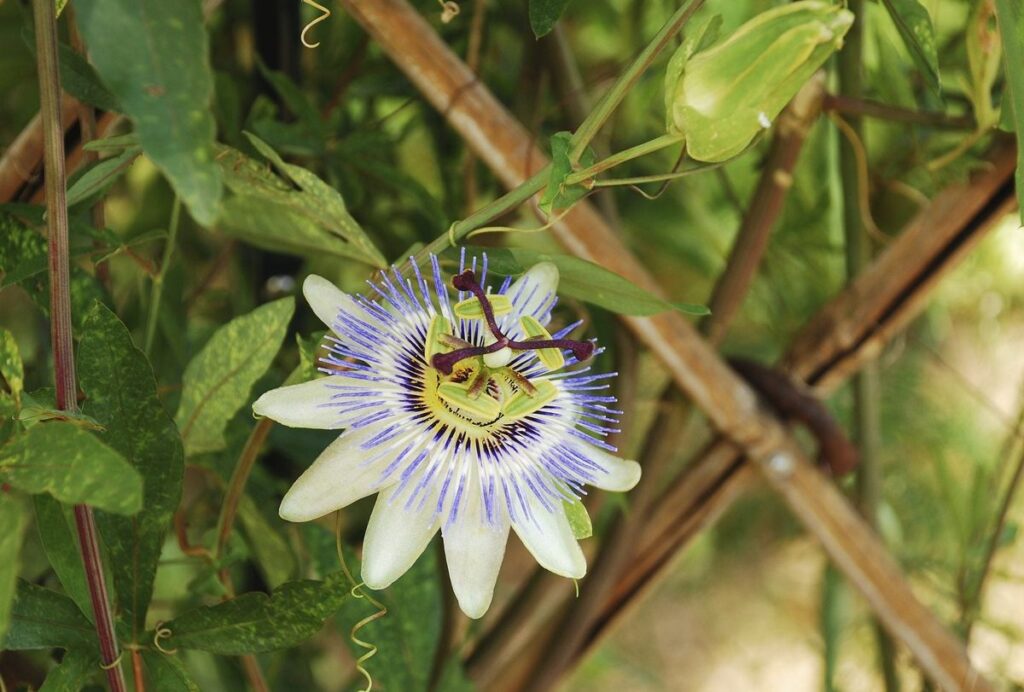Passion flowers, known for their stunning blooms and unique vine-like growth, hold a special place in the hearts of gardeners. As they flourish in diverse climates, understanding the importance of proper pruning techniques is essential for ensuring these plants reach their full potential. Effective pruning not only encourages healthier growth but also enhances flowering, making your garden a vibrant display of colour.
Understanding Passion Flowers
What are Passion Flowers?
Passion flowers, belonging to the genus Passiflora, are notable for their intricate and exotic blooms. These plants come in various types, each offering unique colours and shapes. Whether you have the purple passion flower (Passiflora incarnata) or the yellow passion flower (Passiflora edulis), knowing their specific traits can help you care for them better.
Growth Habits
Typically, passion flowers grow as vigorous vines, capable of reaching heights of up to 30 feet under ideal conditions. They thrive in warm climates and exhibit a seasonal behaviour where their bloom cycles can vary depending on environmental factors. Knowing what to expect during different stages of growth is critical for effective gardening.
When to Consider Cutting Back Passion Flowers
Signs Your Passion Flower Needs Pruning
Recognizing the signs that your passion flower may need pruning can help maintain its health. Look for indications such as overgrowth or lack of blooms, which often signal that your plant might require a trim. Moreover, if you notice damage from pests or diseases, it is essential to act promptly to prevent further decline.
Best Time to Prune
Timing is crucial when it comes to pruning passion flowers. Generally, the best time to prune is during the early spring before new growth begins. However, if you live in a region with milder winters, light pruning in the fall may be beneficial. Always consider how your local climate may influence blooming patterns when making decisions about pruning.
Tips for Cutting Back Passion Flowers
Pruning Techniques
To effectively prune your passion flower, having the right tools is essential. Sharp pruning shears or secateurs will help you make clean cuts, minimizing stress on the plant. Follow a step-by-step guide: start by removing dead or damaged stems first, and then shape the plant as needed for a balanced appearance.
How Much to Cut
When it comes to cutting back, a general guideline is to trim one-third of the plant back to ensure healthy growth. Avoid being overly aggressive, as cutting too much can harm the plant. Learning how to identify healthy stems versus weak ones can help in making precise cuts and avoiding common mistakes.
Post-Pruning Care
Nurturing Your Passion Flower
After pruning, it’s important to nurture your passion flower back to health. Ensure the plant receives adequate watering, especially during the dry season, and consider applying a balanced fertiliser to promote recovery. Monitoring your plant’s response to pruning can guide future care.
Regular Maintenance
Establishing a regular pruning schedule can enhance the long-term health of your passion flower. Routine care ensures the vine remains vigorous and productive, ultimately leading to a more spectacular array of blooms.
Conclusion
Proper pruning of passion flowers is not just a gardening chore; it’s an integral part of maintaining the beauty and health of these remarkable plants. By understanding their growth habits and signs, you can experiment with pruning techniques that will yield optimal blooming results. Enjoy observing the transformation in your garden as you embrace these tips!
Can I cut my passion flower back too much?
Yes, cutting back too much can stress the plant and inhibit blooming. It is essential to follow guidelines on how much to prune based on the plant’s health.
Will cutting back hurt my plant?
If done correctly and at the right time, cutting back a passion flower should not hurt it. Instead, it often encourages new growth and healthier blooms.
Are there specific varieties that require different pruning techniques?
Indeed, specific varieties of passion flowers may have unique growth requirements. Researching the particular type you have will help tailor your pruning approach effectively.


